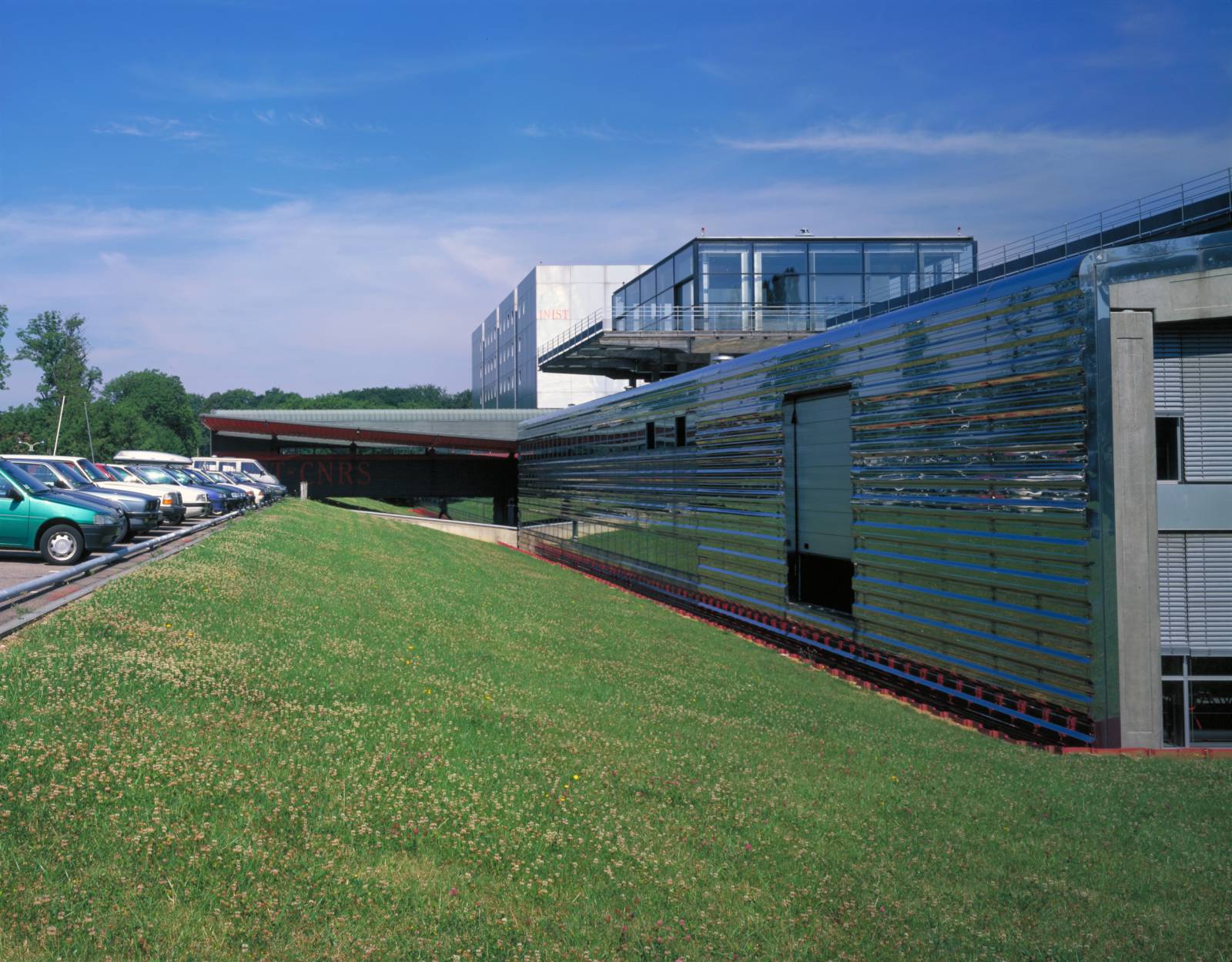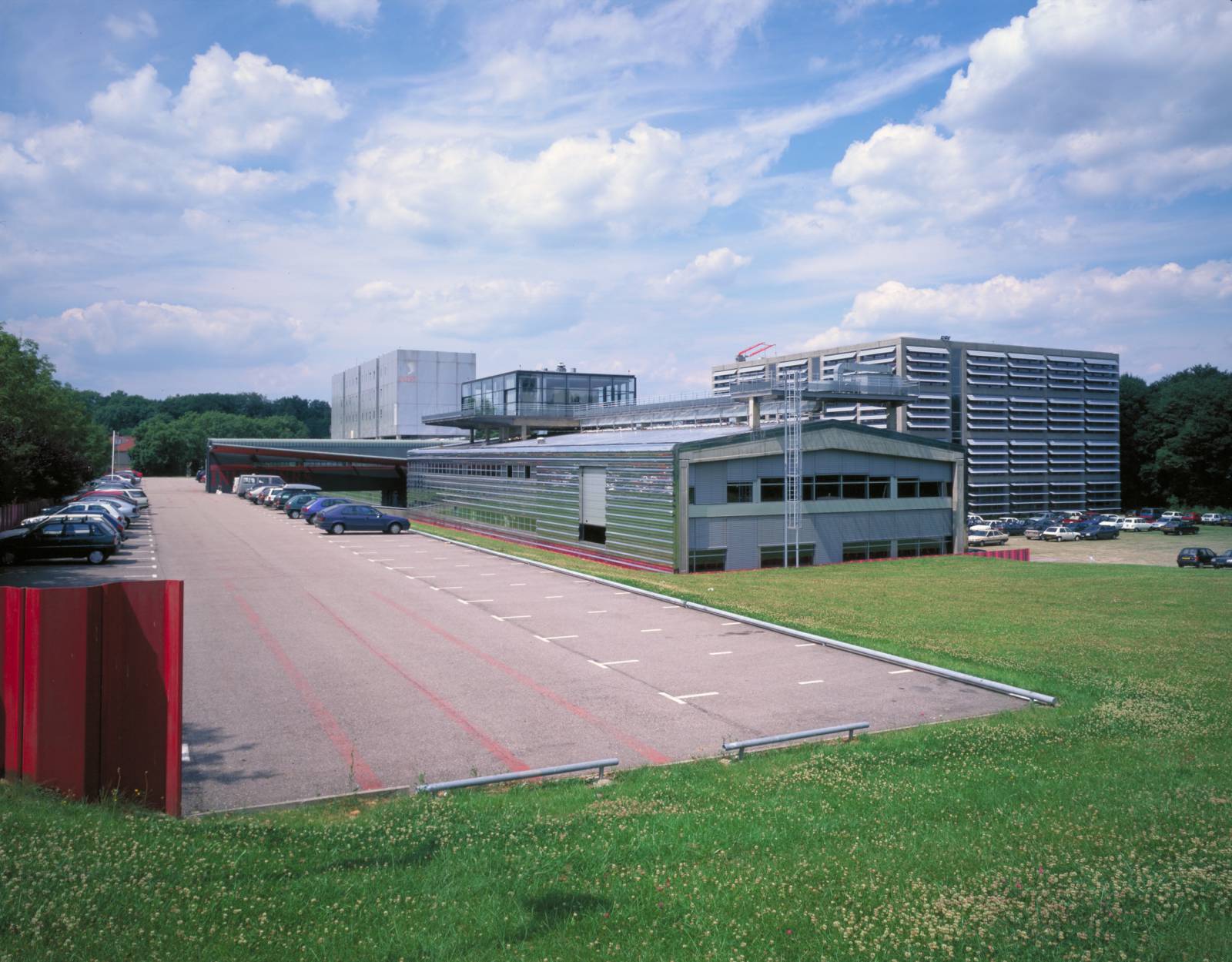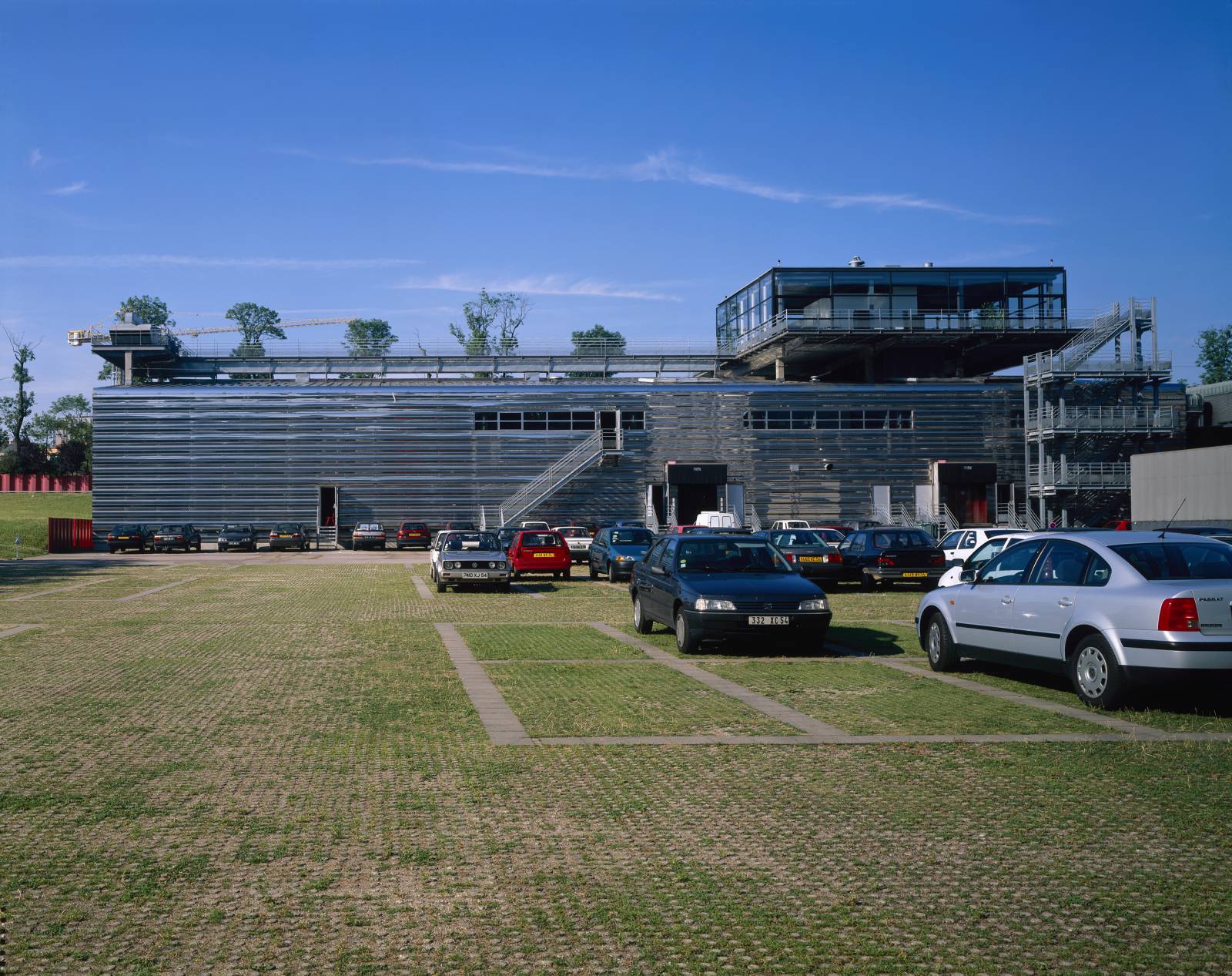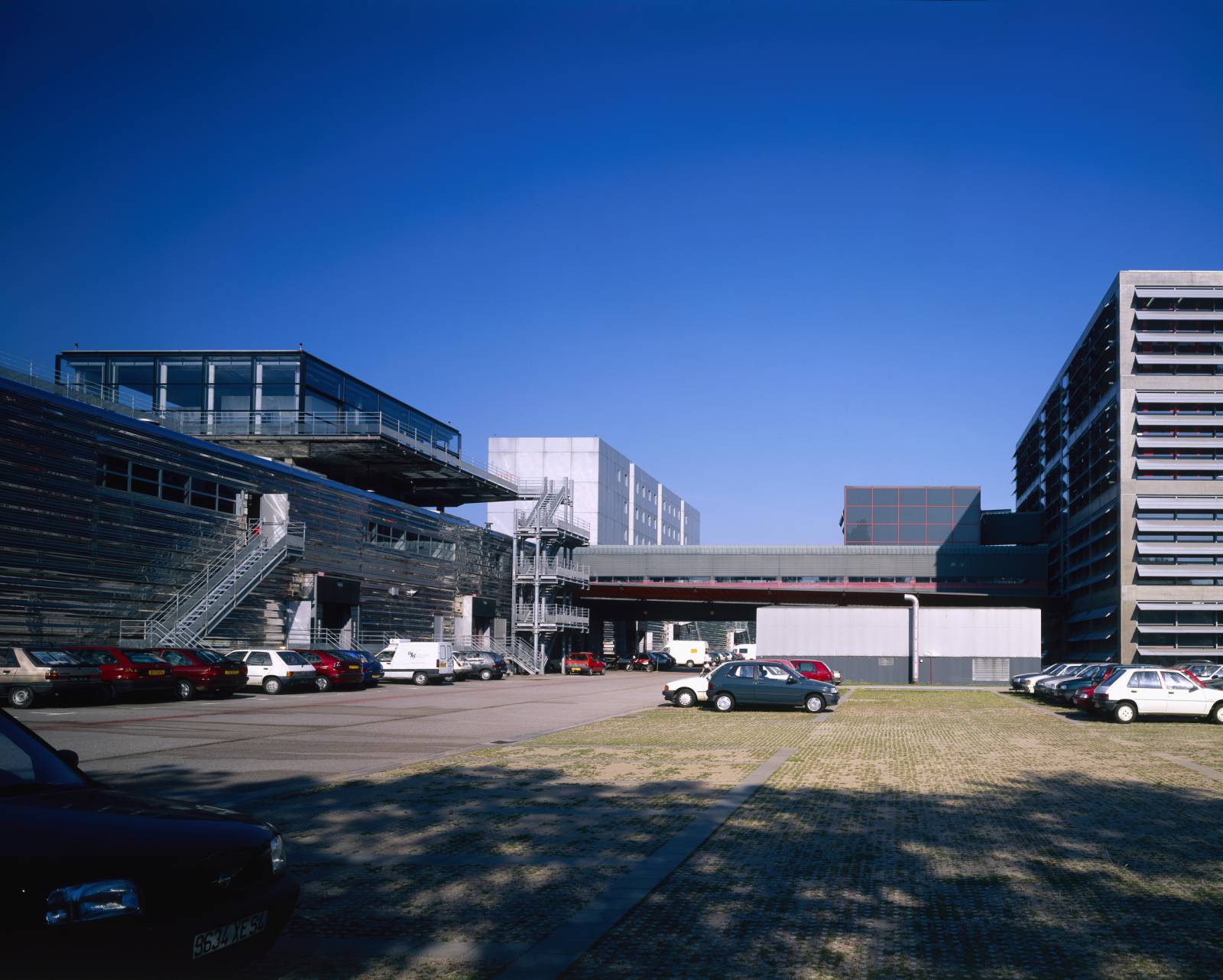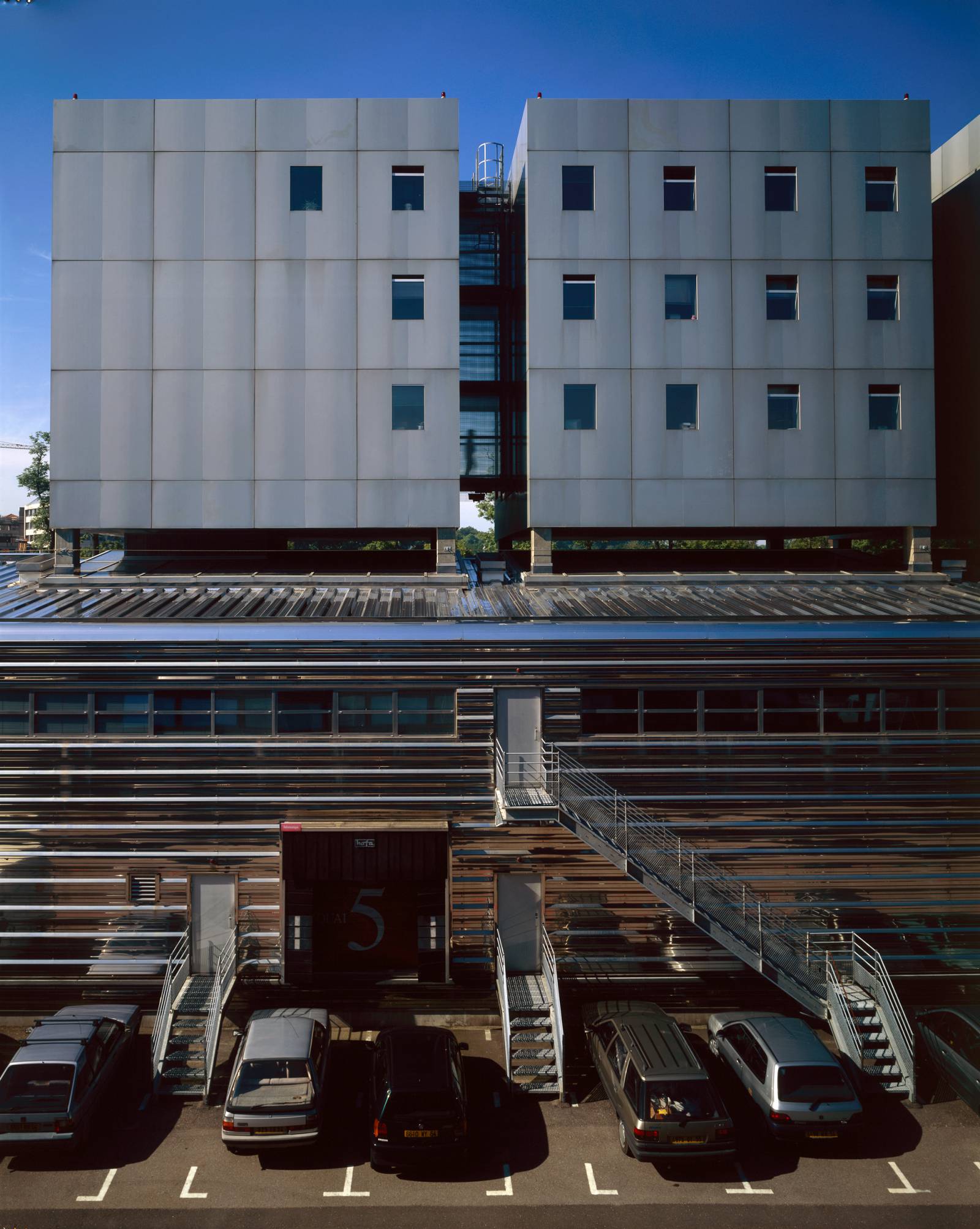- Previous project: Institut de l’information scientifique et technique INIST-CNRS
- Next project: Hôtel Saint-James
INIST-CNRS Institute for scientific and technical information
- Vandœuvre-lès-Nancy, France
INIST is the headquarters building for the Institut de l’Information Scientifique et technique, the French national information institute for technology and science, part of the CNRS, the national center for scientific research, one of the French government’s main research institutions. It was decided in the early 1980s, as part of a general policy of decentralization, to move the archives into a new building, away from Paris. Its purpose would be to store, collate, and distribute scientific information of all kinds and in all media, especially electronic media. A site was chosen near Nancy, in eastern France, and a competition held in 1984, in which Nouvel’s project was the unanimous winner. The central storage unit is linked by a fixed passageway to the main entrance, with the micrographics building and database building feeding into this on one side, the administrative office blocks above micrographics, and social facilities on the other side of the passageway. Although industry is one metaphor for the central storage equate to the hard disk, the database to the CPU, the micrographics building to the SIMS powering the random access memory, and so on. The architecture is principally in steel, glass and concrete, but with differences in the handling that demarcate the individual elements while creating a valid whole in the way that a sequence of shots builds into a film, a coherence of totalities. Thus the red lines that mark edges of facades and boundaries can be read as directional signs or demarcation marks, and the covered passages that link building to building are the tracks and dissolves that move us from scene to scene.
Conway Lloyd Morgan, extract from “The Elements of Architecture”
